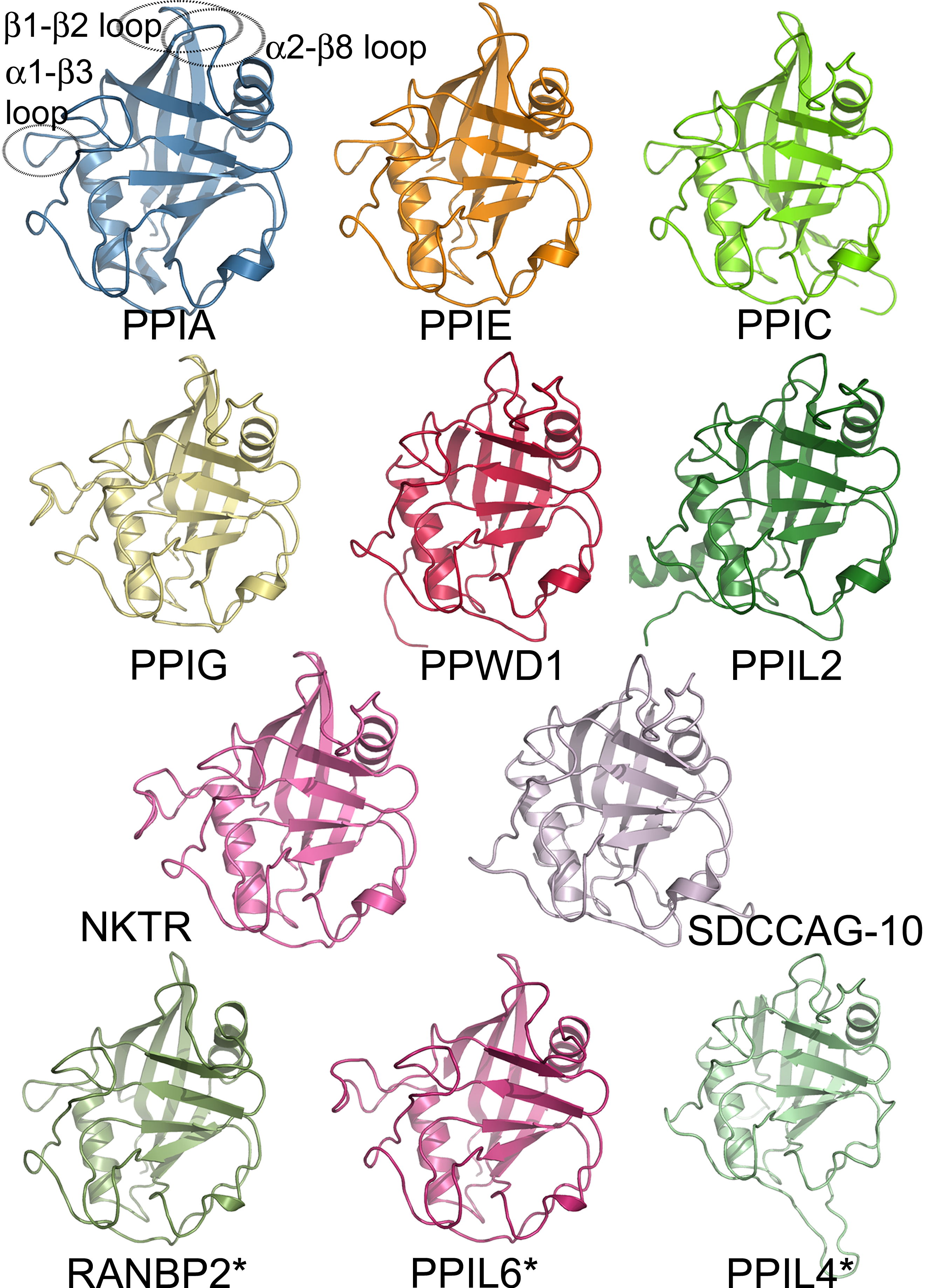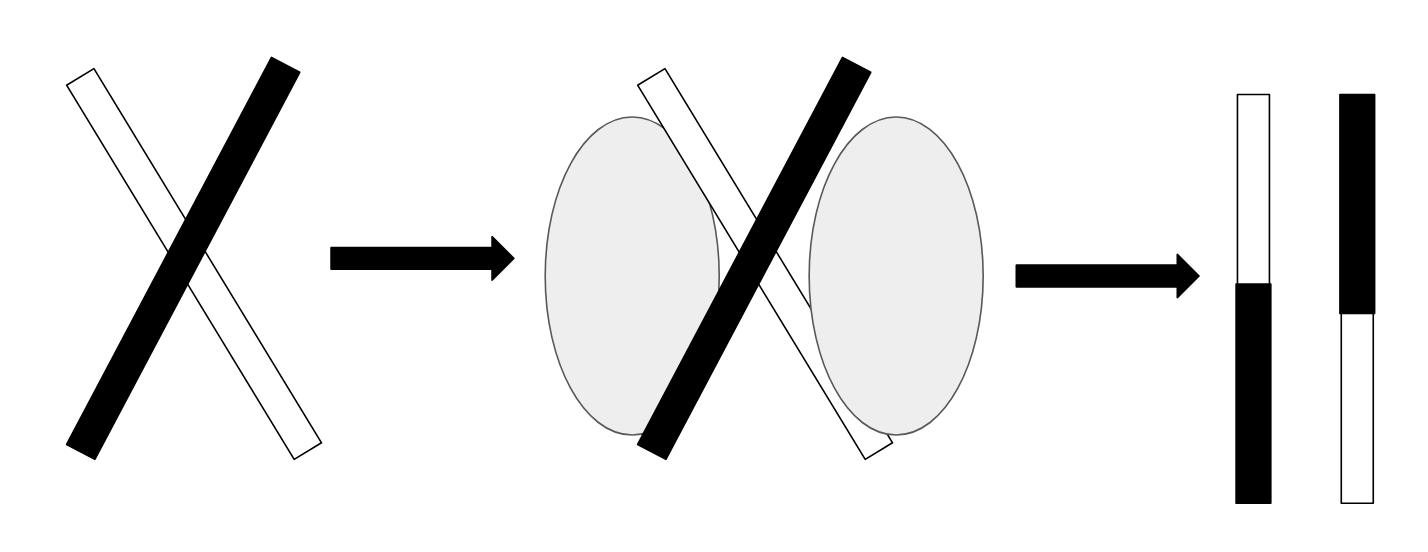|
Cpf1
Cas12a (CRISPR-associated protein 12a, previously known as Cpf1) is an RNA-guided endonuclease-exonuclease that forms an essential component of the CRISPR systems found in some bacteria and archaea. In its natural context, Cas12a targets and destroys the genetic material of viruses and other foreign mobile genetic elements, thereby protecting the host cell from infection. Like other Cas enzymes, Cas12a binds to a "guide" RNA (termed a crRNA, or CRISPR RNA) which targets it to a DNA sequence in a specific and programmable matter. In the host organism, the crRNA contains a constant region that is recognized by the Cas12a protein and a "spacer" region that is complementary to a piece of foreign nucleic acid (e.g. a portion of a phage genome) that previously infected the cell. As with Cas9 and other Cas proteins, the programmable DNA-targeting activity of Cas12a makes it a useful tool for biotechnology and biological research applications. By modifying the spacer sequence in the crR ... [...More Info...] [...Related Items...] OR: [Wikipedia] [Google] [Baidu] |
Protospacer Adjacent Motif
A protospacer adjacent motif (PAM) is a 2–6-base pair DNA sequence immediately following the DNA sequence targeted by the Cas9 nuclease in the CRISPR bacterial adaptive immune system. The PAM is a component of the invading virus or plasmid, but is not found in the bacterial host genome and hence is not a component of the bacterial CRISPR locus. Cas9 will not successfully bind to or cleave the target DNA sequence if it is not followed by the PAM sequence. PAM is an essential targeting component which distinguishes bacterial self from non-self DNA, thereby preventing the CRISPR locus from being targeted and destroyed by the CRISPR-associated nuclease. Spacers/protospacers In a bacterial genome, CRISPR loci contain "spacers" (viral DNA inserted into a CRISPR locus) that in type II adaptive immune systems were created from invading viral or plasmid DNA (called "protospacers"). Upon subsequent invasion, a CRISPR-associated nuclease such as Cas9 attaches to a tracrRNA– crRNA comple ... [...More Info...] [...Related Items...] OR: [Wikipedia] [Google] [Baidu] |
CRISPR
CRISPR (; acronym of clustered regularly interspaced short palindromic repeats) is a family of DNA sequences found in the genomes of prokaryotic organisms such as bacteria and archaea. Each sequence within an individual prokaryotic CRISPR is derived from a DNA fragment of a bacteriophage that had previously infected the prokaryote or one of its ancestors. These sequences are used to detect and destroy DNA from similar bacteriophages during subsequent infections. Hence these sequences play a key role in the antiviral (i.e. anti- phage) defense system of prokaryotes and provide a form of heritable, acquired immunity. CRISPR is found in approximately 50% of sequenced bacterial genomes and nearly 90% of sequenced archaea. Cas9 (or "CRISPR-associated protein 9") is an enzyme that uses CRISPR sequences as a guide to recognize and open up specific strands of DNA that are complementary to the CRISPR sequence. Cas9 enzymes together with CRISPR sequences form the basis of a technology ... [...More Info...] [...Related Items...] OR: [Wikipedia] [Google] [Baidu] |
Gene Drive
A gene drive is a natural process and technology of genetic engineering that propagates a particular suite of genes throughout a population by altering the probability that a specific allele will be transmitted to offspring (instead of the Mendelian 50% probability). Gene drives can arise through a variety of mechanisms. They have been proposed to provide an effective means of genetically modifying specific populations and entire species. The technique can employ adding, deleting, disrupting, or modifying genes. Proposed applications include exterminating insects that carry pathogens (notably mosquitoes that transmit malaria, dengue, and zika pathogens), controlling invasive species, or eliminating herbicide or pesticide resistance. As with any potentially powerful technique, gene drives can be misused in a variety of ways or induce unintended consequences. For example, a gene drive intended to affect only a local population might spread across an entire species. Gene driv ... [...More Info...] [...Related Items...] OR: [Wikipedia] [Google] [Baidu] |
Francisella
''Francisella'' is a genus of Gram-negative bacteria. They are small coccobacillary or rod-shaped, nonmotile organisms, which are also facultative intracellular parasites of macrophages. Strict aerobes, ''Francisella'' colonies bear a morphological resemblance to those of the genus ''Brucella''. Some ''Francisella'' species are pathogenic bacteria but some others are endosymbionts of ticks. Ticks do not use any other food source than vertebrate blood and therefore ingest high levels of protein, iron and salt, but few vitamins. To overcome these nutritional deficiencies, ticks have evolved obligate interactions with nutritional endosymbionts, including ''Francisella'' endosymbionts. Their experimental elimination typically results in decreased tick survival, molting, fecundity and egg viability, as well as in physical abnormalities, which all are fully restored with an oral supplement of B vitamins. The genome sequencing of ''Francisella'' endosymbionts confirmed that they consi ... [...More Info...] [...Related Items...] OR: [Wikipedia] [Google] [Baidu] |
Acidaminococcus
''Acidaminococcus'' is a genus in the phylum Bacillota (Bacteria), whose members are anaerobic diplococci that can use amino acids as the sole energy source for growth. Like other members of the class Negativicutes, they are gram-negative, despite being Bacillota, which are normally gram-positive. Etymology The name ''Acidaminococcus'' derives from:Neo-Latin noun ''acidum'' (from Latin adjective ''acidus'', sour), an acid; Neo-Latin adjective ''aminus'', amino; Neo-Latin masculine gender noun ''coccus'' (from Greek masculine gender noun ''kokkos (κόκκος)'', grain, seed), coccus-shaped; Neo-Latin masculine gender noun ''Acidaminococcus'', the amino acid coccus. Phylogeny The currently accepted taxonomy is based on the List of Prokaryotic names with Standing in Nomenclature (LPSN) and National Center for Biotechnology Information (NCBI). See also * Bacterial taxonomy * Microbiology * ''Selenomonas'' * List of bacterial orders * List of bacteria genera This article lists ... [...More Info...] [...Related Items...] OR: [Wikipedia] [Google] [Baidu] |
Lachnospiraceae
The Lachnospiraceae are a family of obligately anaerobic, variably spore-forming bacteria in the order Eubacteriales that ferment diverse plant polysaccharides to short-chain fatty acids (butyrate, acetate) and alcohols (ethanol). These bacteria are among the most abundant taxa in the rumen and the human gut microbiota. Members of this family may protect against colon cancer in humans by producing butyric acid. Lachnospiraceae have been found to contribute to diabetes in genetically susceptible (ob/ob) germ-free mice. Phylogeny The currently accepted taxonomy is based on the List of Prokaryotic names with Standing in Nomenclature (LPSN) and National Center for Biotechnology Information (NCBI) Unassinged Genera: * "''Africanella''" Alou, Fournier & Raoult 2016 non Vermeij & Houart, 1999 * ''Anaerolentibacter'' Yan et al. 2024 * ''Anaerotaenia'' Ueki et al. 2016 * ''Chakrabartyella'' Pardesi et al. 2023 * "''Ca.'' Colinaster" Gilroy et al. 2022 * "''Ca.'' Darwinimomas" Gilroy et ... [...More Info...] [...Related Items...] OR: [Wikipedia] [Google] [Baidu] |
Genera
Genus (; : genera ) is a taxonomic rank above species and below family as used in the biological classification of living and fossil organisms as well as viruses. In binomial nomenclature, the genus name forms the first part of the binomial species name for each species within the genus. :E.g. '' Panthera leo'' (lion) and '' Panthera onca'' (jaguar) are two species within the genus '' Panthera''. ''Panthera'' is a genus within the family Felidae. The composition of a genus is determined by taxonomists. The standards for genus classification are not strictly codified, so different authorities often produce different classifications for genera. There are some general practices used, however, including the idea that a newly defined genus should fulfill these three criteria to be descriptively useful: # monophyly – all descendants of an ancestral taxon are grouped together (i.e. phylogenetic analysis should clearly demonstrate both monophyly and validity as a separate lineag ... [...More Info...] [...Related Items...] OR: [Wikipedia] [Google] [Baidu] |
Prevotella
''Prevotella'' is a genus of Gram-negative bacteria. ''Prevotella'' species are widely distributed across varied ecological habitats, with 57 characterized species spanning both human and other mammalian hosts. In mammals, this genus is notably prevalent in the swine gut microbiome. In humans, ''Prevotella'' species are members of the oral, vaginal, and gut microbiota and are often recovered from anaerobic infections of the respiratory tract. These infections include aspiration pneumonia, lung abscess, pulmonary empyema, and chronic otitis media and sinusitis. They have been isolated from abscesses and burns in the vicinity of the mouth, bites, paronychia, urinary tract infection, brain abscesses, osteomyelitis, and bacteremia associated with upper respiratory tract infections. ''Prevotella'' spp. predominate in periodontal disease and periodontal abscesses. Role in gut microbiota The human gut is mainly inhabited by two phyla of bacteria—''Bacillota'' and ''Bacteroidot ... [...More Info...] [...Related Items...] OR: [Wikipedia] [Google] [Baidu] |
Protein Families
A protein family is a group of evolutionarily related proteins. In many cases, a protein family has a corresponding gene family, in which each gene encodes a corresponding protein with a 1:1 relationship. The term "protein family" should not be confused with family as it is used in taxonomy. Proteins in a family descend from a common ancestor and typically have similar three-dimensional structures, functions, and significant sequence similarity. Sequence similarity (usually amino-acid sequence) is one of the most common indicators of homology, or common evolutionary ancestry. Some frameworks for evaluating the significance of similarity between sequences use sequence alignment methods. Proteins that do not share a common ancestor are unlikely to show statistically significant sequence similarity, making sequence alignment a powerful tool for identifying the members of protein families. Families are sometimes grouped together into larger clades called superfamilies based on stru ... [...More Info...] [...Related Items...] OR: [Wikipedia] [Google] [Baidu] |
Crossover Junction Endodeoxyribonuclease
Crossover junction endodeoxyribonuclease, also known as Holliday junction resolvase, Holliday junction endonuclease, Holliday junction-cleaving endonuclease, Holliday junction-resolving endoribonuclease, crossover junction endoribonuclease, and cruciform-cutting endonuclease, is an enzyme involved in DNA repair and homologous recombination. Specifically, it performs endonucleolytic cleavage that results in single-stranded crossover between two homologous DNA molecules at the Holliday junction to produce recombinant DNA products for chromosomal segregation. This process is known as Holliday junction resolution. Biological Function The Holliday junction is a structure that forms during genetic recombination, and links two double-stranded DNA molecules with a single-stranded crossover, which form during mitotic and meiotic recombination. Crossover junction endodeoxyribonucleases catalyze Holiday junction resolution, which is the formation of separate recombinant DNA molecules and ... [...More Info...] [...Related Items...] OR: [Wikipedia] [Google] [Baidu] |
Zinc Finger
A zinc finger is a small protein structural motif that is characterized by the coordination of one or more zinc ions (Zn2+) which stabilizes the fold. The term ''zinc finger'' was originally coined to describe the finger-like appearance of a hypothesized structure from the African clawed frog (''Xenopus laevis'') transcription factor IIIA. However, it has been found to encompass a wide variety of differing protein structures in eukaryotic cells. '' Xenopus laevis'' TFIIIA was originally demonstrated to contain zinc and require the metal for function in 1983, the first such reported zinc requirement for a gene regulatory protein followed soon thereafter by the Krüppel factor in ''Drosophila''. It often appears as a metal-binding domain in multi-domain proteins. Proteins that contain zinc fingers (zinc finger proteins) are classified into several different structural families. Unlike many other clearly defined supersecondary structures such as Greek keys or β hairpins, ... [...More Info...] [...Related Items...] OR: [Wikipedia] [Google] [Baidu] |






